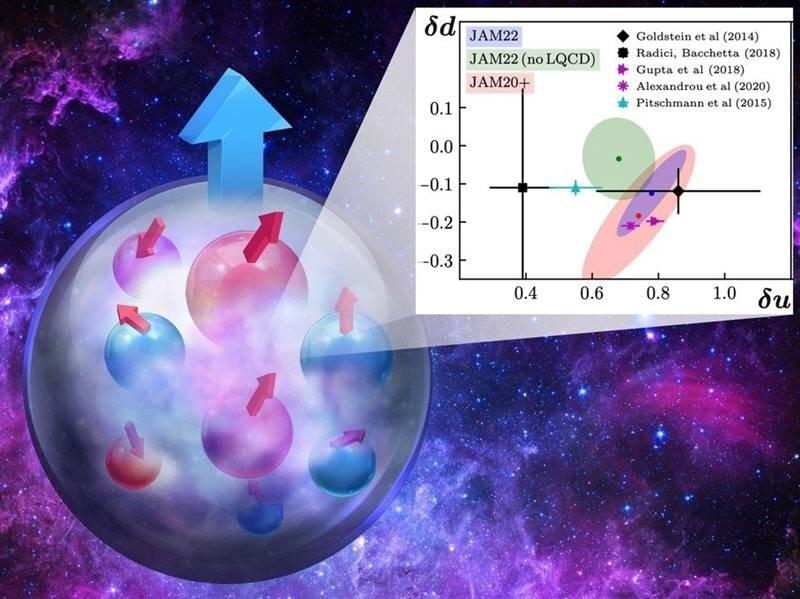Inside the proton are elementary particles called quarks. Quarks and protons have an intrinsic angular momentum called spin. Spin can point in different directions. When it is perpendicular to the proton’s momentum, it is called a transverse spin. Just like the proton carries an electric charge, it also has another fundamental charge called the tensor charge. The tensor charge is the net transverse spin of quarks in a proton with transverse spin.
The only way to obtain the tensor charge from experimental data is using the theory of quantum chromodynamics (QCD) to extract the “transversity” function. This universal function encodes the difference between the number of quarks with their spin aligned and anti-aligned to the proton’s spin when it is in a transverse direction. Using state-of-the-art data science techniques, researchers recently made the most precise empirical determination of the tensor charge.
Due to the phenomenon known as confinement, quarks are always bound in the proton or other hadrons (particles with multiple quarks). The challenge is to connect the theory of quark interactions (QCD) to experimental measurements of high-energy collisions involving hadrons.
